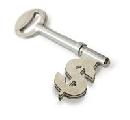
 |
|
| Financial Terms | |
| Cash discount |
|
Information about financial, finance, business, accounting, payroll, inventory, investment, money, inventory control, stock trading, financial advisor, tax advisor, credit.
Main Page: financial, inventory, credit, finance, financial advisor, payroll, business, stock trading, |
Definition of Cash discount
Cash discountAn incentive offered to purchasers of a firm's product for payment within a specified time
Related Terms:Discounted cash flow (DCF)Future cash flows multiplied by discount factors to obtain present values. Discounted cash flow (DCF)A method of investment appraisal that discounts future cash flows to present value using a discount rate, which is the risk-adjusted cost of capital. discounted cash flow (DCF)Refers to a capital investment analysis technique Discounted cash flowA technique that determines the present value of future cash Discounted Cash FlowTechniques for establishing the relative worth of a future investment by discounting (at a required rate of return) the expected net cash flows from the project. ADF (annuity discount factor)the present value of a finite stream of cash flows for every beginning $1 of cash flow. DLOC (discount for lack of control)an amount or percentage deducted from a pro rata share of the value of 100% of an equity interest in a business, to reflect the absence of some or all of the powers of control.  DLOM (discount for lack of marketability)an amount or percentage deducted from an equity interest to reflect lack of marketability. discount ratethe rate of return on investment that would be required by a prudent investor to invest in an asset with a specific level risk. Also, a rate of return used to convert a monetary sum, payable or receivable in the future, into present value. fractional interest discountthe combined discounts for lack of control and marketability. g the constant growth rate in cash flows or net income used in the ADF, Gordon model, or present value factor. NPV (net present value of cash flows)Same as PV, but usually includes a subtraction for an initial cash outlay. PV (present value of cash flows)the value in today’s dollars of cash flows that occur in different time periods. QMDM (quantitative marketability discount model)model for calculating DLOM for minority interests r the discount rate Accretion (of a discount)In portfolio accounting, a straight-line accumulation of capital gains on discount Bank discount basisA convention used for quoting bids and offers for treasury bills in terms of annualized CashThe value of assets that can be converted into cash immediately, as reported by a company. Usually  Cash budgetA forecasted summary of a firm's expected cash inflows and cash outflows as well as its Cash and carryPurchase of a security and simultaneous sale of a future, with the balance being financed Cash and equivalentsThe value of assets that can be converted into cash immediately, as reported by a Cash commodityThe actual physical commodity, as distinguished from a futures contract. Cash conversion cycleThe length of time between a firm's purchase of inventory and the receipt of cash Cash cowA company that pays out all earnings per share to stockholders as dividends. Or, a company or Cash cycleIn general, the time between cash disbursement and cash collection. In net working capital Cash deficiency agreementAn agreement to invest cash in a project to the extent required to cover any cash Cash deliveryThe provision of some futures contracts that requires not delivery of underlying assets but Cash dividendA dividend paid in cash to a company's shareholders. The amount is normally based on Cash equivalentA short-term security that is sufficiently liquid that it may be considered the financial  Cash flowIn investments, it represents earnings before depreciation , amortization and non-cash charges. Cash flow after interest and taxesNet income plus depreciation. Cash flow coverage ratioThe number of times that financial obligations (for interest, principal payments, Cash flow from operationsA firm's net cash inflow resulting directly from its regular operations Cash flow matchingAlso called dedicating a portfolio, this is an alternative to multiperiod immunization in Cash flow per common sharecash flow from operations minus preferred stock dividends, divided by the Cash flow time-lineLine depicting the operating activities and cash flows for a firm over a particular period. Cash-flow break-even pointThe point below which the firm will need either to obtain additional financing Cash management billVery short maturity bills that the Treasury occasionally sells because its cash Cash marketsAlso called spot markets, these are markets that involve the immediate delivery of a security Cash offerA public equity issue that is sold to all interested investors. Cash ratioThe proportion of a firm's assets held as cash. Cash settlement contractsFutures contracts, such as stock index futures, that settle for cash, not involving Cash transactionA transaction where exchange is immediate, as contrasted to a forward contract, which Cash-equivalent itemsTemporary investments of currently excess cash in short-term, high-quality Cash-surrender valueAn amount the insurance company will pay if the policyholder ends a whole life CashoutRefers to a situation where a firm runs out of cash and cannot readily sell marketable securities. Deep-discount bondA bond issued with a very low coupon or no coupon and selling at a price far below par DiscountReferring to the selling price of a bond, a price below its par value. Related: premium. Discount bondDebt sold for less than its principal value. If a discount bond pays no interest, it is called a Discount factorPresent value of $1 received at a stated future date. Discount periodThe period during which a customer can deduct the discount from the net amount of the bill Discount rateThe interest rate that the Federal Reserve charges a bank to borrow funds when a bank is Discount securitiesNon-interest-bearing money market instruments that are issued at a discount and Discount windowFacility provided by the Fed enabling member banks to borrow reserves against collateral Discounted basisSelling something on a discounted basis is selling below what its value will be at maturity, Discounted dividend model (DDM)A formula to estimate the intrinsic value of a firm by figuring the Discounted payback period ruleAn investment decision rule in which the cash flows are discounted at an DiscountingCalculating the present value of a future amount. The process is opposite to compounding. Discretionary cash flowcash flow that is available after the funding of all positive NPV capital investment Dividend discount model (DDM)A model for valuing the common stock of a company, based on the Documented discount notesCommercial paper backed by normal bank lines plus a letter of credit from a Equivalent annual cash flowAnnuity with the same net present value as the company's proposed investment. Expected future cash flowsProjected future cash flows associated with an asset of decision. Forward discountA currency trades at a forward discount when its forward price is lower than its spot price. Free cash flowscash not required for operations or for reinvestment. Often defined as earnings before General cash offerA public offering made to investors at large. Incremental cash flowsDifference between the firm's cash flows with and without a project. Ledger cashA firm's cash balance as reported in its financial statements. Also called book cash. Net cash balanceBeginning cash balance plus cash receipts minus cash disbursements. Nominal cash flowA cash flow expressed in nominal terms if the actual dollars to be received or paid out are given. Noncash chargeA cost, such as depreciation, depletion, and amortization, that does not involve any cash outflow. Operating cash flowEarnings before depreciation minus taxes. It measures the cash generated from Original issue discount debt (OID debt)Debt that is initially offered at a price below par. Pure-discount bondA bond that will make only one payment of principal and interest. Also called a zerocoupon Real cash flowA cash flow is expressed in real terms if the current, or date 0, purchasing power of the cash Scheduled cash flowsThe mortgage principal and interest payments due to be paid under the terms of the Statement of cash flowsA financial statement showing a firm's cash receipts and cash payments during a Statement-of-cash-flows methodA method of cash budgeting that is organized along the lines of the statement of cash flows. Symmetric cash matchingAn extension of cash flow matching that allows for the short-term borrowing of Target cash balanceOptimal amount of cash for a firm to hold, considering the trade-off between the Wanted for cashA statement displayed on market tickers indicating that a bidder will pay cash for same day CASH AND CASH EQUIVALENTSThe balance in a company’s checking account(s) plus short-term or temporary investments (sometimes called “marketable securities”), which are highly liquid. CASH-FLOW STATEMENTA statement that shows where a company’s cash came from and where it went for a period of time, such as a year. CASH FLOWS FROM FINANCING ACTIVITIESA section on the cash-flow statement that shows how much cash a company raised by selling stocks or bonds this year and how much was paid out for cash dividends and other finance-related obligations. CASH FLOWS FROM INVESTING ACTIVITIESA section on the cashflow statement that shows how much cash came in and went out because of various investing activities like purchasing machinery. CASH FLOWS FROM OPERATIONSA section on the cash-flow Stockholders’ equity statement that shows how much cash came into a company and how much went out during the normal course of business. Cash accountingA method of accounting in which profit is calculated as the difference between income Cash costThe amount of cash expended. Cash Flow statementA financial report that shows the movement in cash for a business during an accounting period. Cash value added (CVA)A method of investment appraisal that calculates the ratio of the net present value of an CashAmounts held in currency and coin (commonly referred to as petty cash) and amounts on deposit in financial institutions. Cash receipts journalA journal used to record the transactions that result in a debit to cash. Petty cashThe amount of currency and coin that a company keeps on hand to pay for small purchases and expenses. Purchase discountsA contra account that reduces purchases by the amount of the discounts taken for early payment. Sales discountsA contra account that offsets revenue. It represents the amount of the discounts for early payment allowed on sales. Statement of Cash FlowsOne of the basic financial statements; it lists the cash inflows and cash outflows of the company, grouped into the categories of operating activities, financing activities, and investing activities. The Statement of cash Flows is prepared for a specified period of time. cash burn rateA relatively recent term that refers to how fast a business cash flowAn obvious but at the same time elusive term that refers to cash cash flow from operating activities, or cash flow from profitThis equals the cash inflow from sales during the period minus the cash statement of cash flowsOne of the three primary financial statements free cash flowGenerally speaking, this term refers to cash flow from Related to : financial, finance, business, accounting, payroll, inventory, investment, money, inventory control, stock trading, financial advisor, tax advisor, credit. |